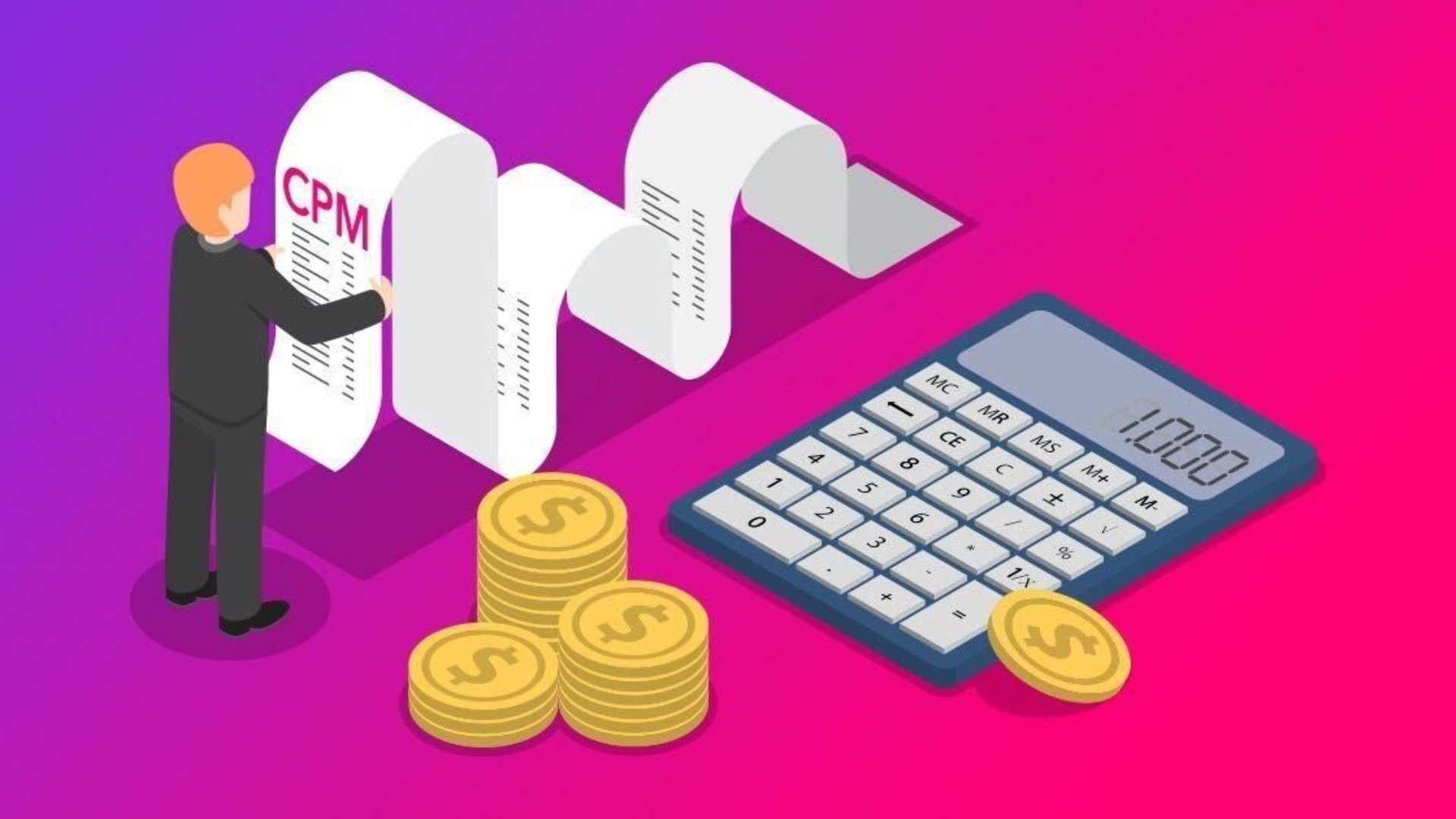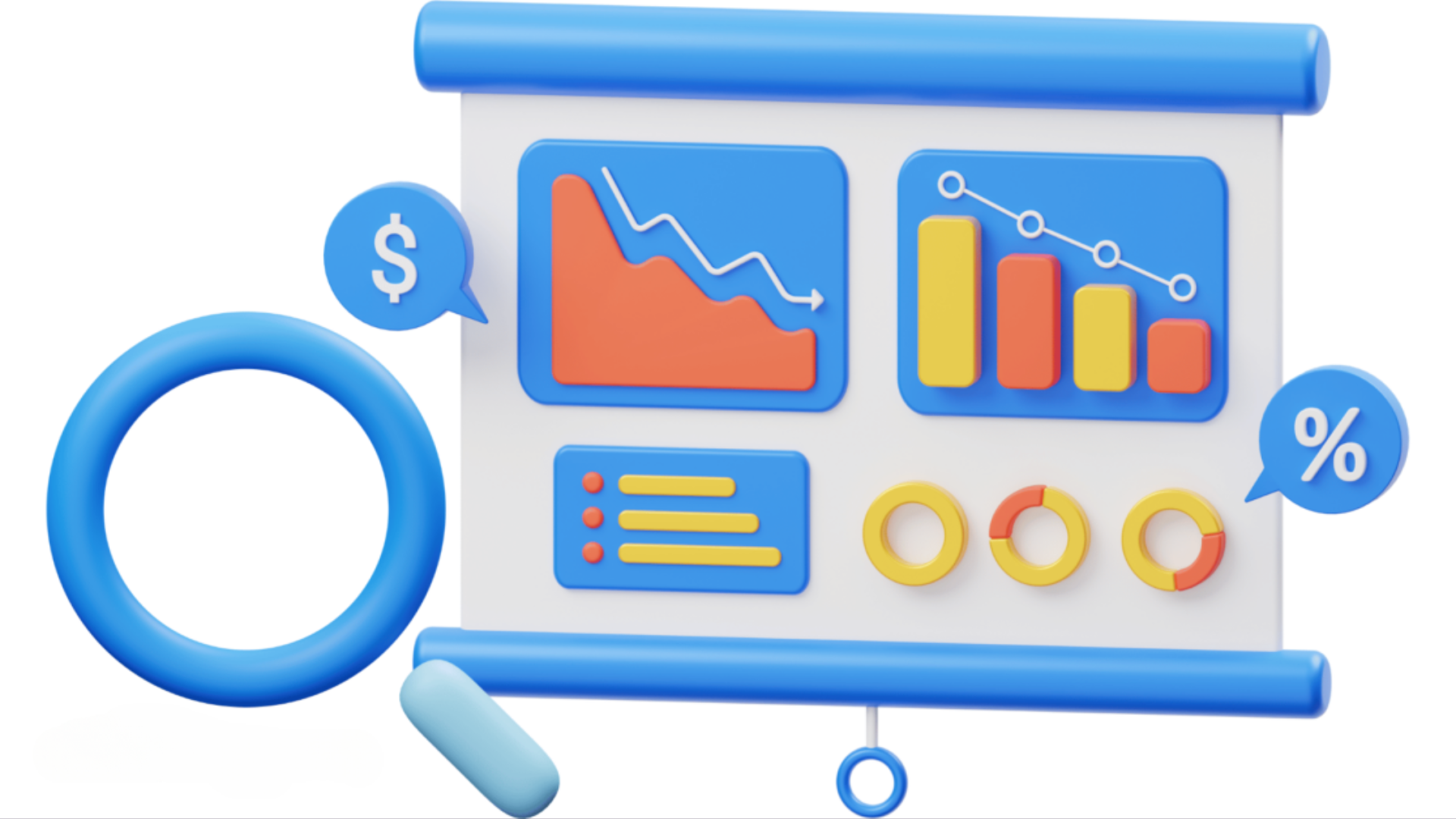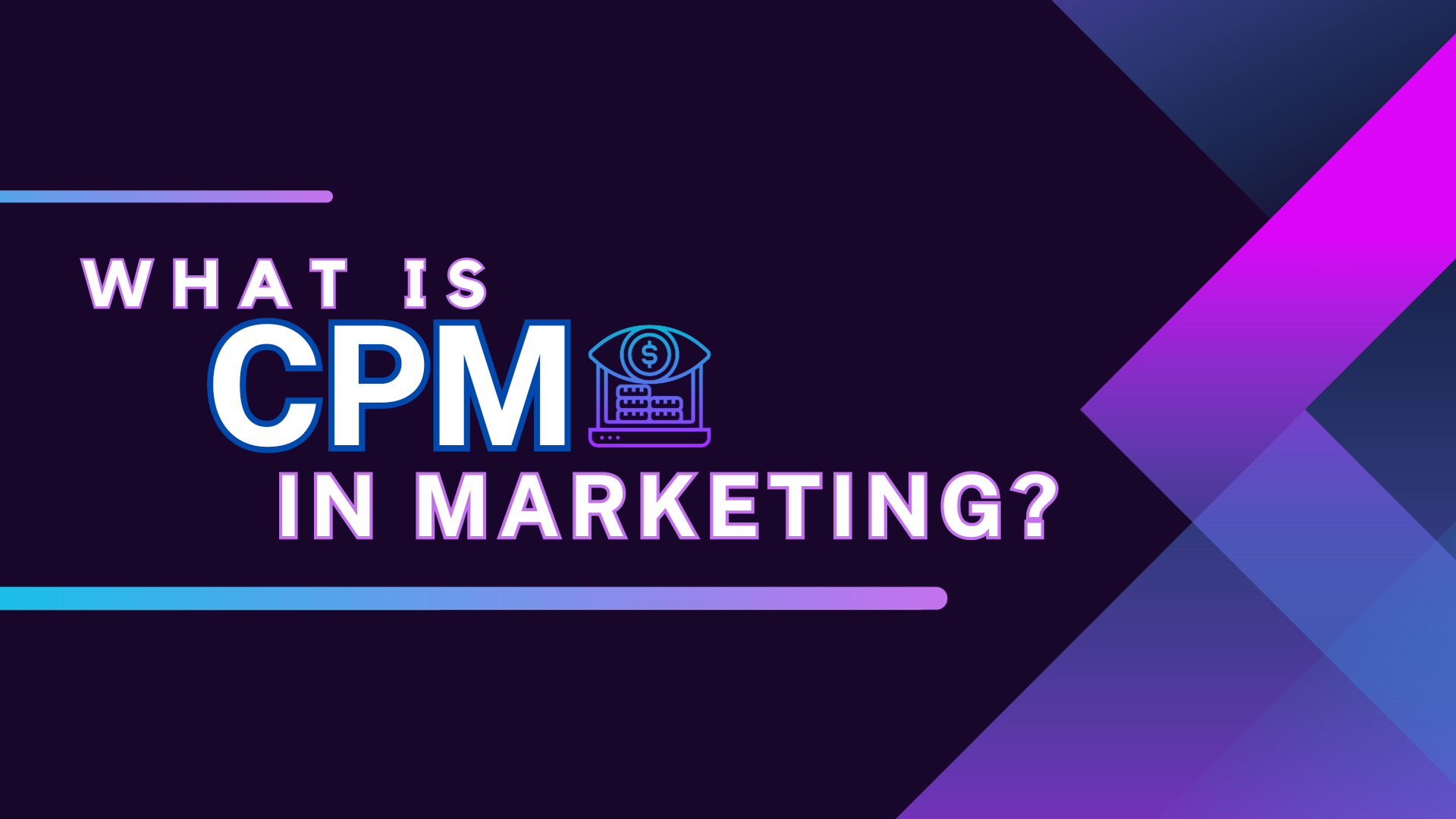What is CPM marketing? Cost per mile (CPM) marketing is when companies pay a set amount for every 1,000 times people see their ad online. Let’s learn more about CPM marketing in this article.
The word “mile” comes from a Latin word that means a thousand, and CPM is about the cost for a thousand times an ad is seen. This is often used for online ads, like those on websites, apps, or other digital places.
Unlike some other ways ads are paid for, like clicking on them or buying something because of them, CPM cares more about how many times people see the ad rather than what they do with it.
Before we learn about the benefits of CPM marketing and explore how it’s used in advertising, let’s first answer the primary question, “What is CPM marketing?”
What is CPM marketing?

What is CPM marketing? CPM marketing is simple and easy for advertisers to plan. They can figure out how much it costs to show their ad to a certain number of people using the CPM rate. This helps them set budgets and decide on their ads. But, it’s important to know that with CPM, advertisers pay for showing the ad, even if people don’t click on it or do what the ad wants them to do.
How well CPM marketing functions relies upon what the promotion is attempting to do and what it’s advancing. It’s truly really great for making many individuals familiar with a brand, such as saying, “Hello, we’re here!” However, in the event that the objective is to cause individuals to accomplish something explicit, similar to clicking a connection or purchasing something, CPM probably won’t be the most ideal decision. Sponsors need to ponder what they need to accomplish and choose if CPM is the correct method for getting it done.
Because of something called programmatic advertising, CPM has become a big deal in digital marketing. Programmatic means computers do the work of buying and selling ads really fast, helping advertisers aim at certain groups and choose the best CPM prices. This makes things faster and more accurate. Even as digital advertising changes, CPM stays important for advertisers to figure out if their ads are worth the money and how to spend their budgets wisely.
How does CPM marketing work?
What is CPM marketing? Indeed, it’s a way for organizations to pay a limited sum for each multiple times individuals see their promotion. Because it keeps track of how many times an advertisement is shown, this kind of marketing works well for making a lot of people aware of a brand. Here is an itemized breakdown of how CPM showcasing functions:
- Impressions and CPM rate
- Ad placement and auctions
- Programmatic advertising
- Campaign objectives
- Measurement and optimization
Impressions and CPM rate:
Impressions comprise the primary measurement in the thing is CPM showcasing, counting each example a promotion is shown on a client’s screen, paying little heed to client communication. Promoters and distributors arrange a CPM rate, addressing the expense a publicist consents to pay for each 1,000 advertisement impressions. Based on the anticipated number of impressions, the cost of running a campaign is calculated using this agreed-upon rate.
Ad placement and auctions:
In what is CPM marketing, advertisers make smart choices about where to put their ads, like on certain websites or platforms, to reach the people they want to see it. With programmatic advertising, which is a big part of CPM marketing, quick auctions happen when spaces for ads open up. Advertisers join these auctions and bid (like making an offer) to show their ads to specific groups of people.
Programmatic advertising:
Programmatic advertising, a key element in what is CPM marketing, uses calculations to mechanize the trading of promotion stock through continuous sales. This computerized interaction upgrades effectiveness and empowers publicists to definitively focus on their ideal crowd in light of socio economics, interests, and other important rules.
Campaign objectives:
CPM marketing works great for certain goals, especially ones about making people know a brand. Even though it doesn’t promise people will click or do something with the ad, it’s good at getting their attention and starting them to be interested in the brand. CPM campaigns are usually set up to make sure lots of people see and recognize the brand.
Measurement and optimization:
In CPM marketing, there are a few difficulties like ensuring individuals can truly see the promotions and staying away from stunts where advertisements appear however no one sees them. Publicists utilize various measures, similar to the number of individuals that really see the promotions and that they are, to check assuming their advertisements are functioning admirably. They continue to make enhancements to ensure the promotions work effectively and that sponsors get a fair shake.
Why use CPM in advertising?
What is CPM marketing? Well, it’s a popular way to decide how much ads cost on the internet. Lots of people use it because it fits different goals and what advertisers like. Here is a detailed exploration of the reasons behind the prevalent use of CPM in advertising:
- Brand exposure and awareness
- Predictable cost structure
- Suitable for display advertising
- Programmatic advertising efficiency
- Broad reach and scale
- Effective branding campaigns
Brand exposure and awareness:
CPM is great for campaigns that want lots of people to know about a brand. Advertisers pay for how many times their ad is shown, so they can make their brand seen by many people. Even though CPM doesn’t promise people will click or do something with the ad, it’s good at making sure lots of people hear about the brand.
Predictable cost structure:
Advertisers like CPM because it’s predictable. They decide on a fixed cost for a certain number of times their ad is shown. This makes it easy for them to plan and figure out how much the whole ad campaign will cost based on how many people they think will see it. The simple cost structure helps them plan their advertising budgets well.
Suitable for display advertising:
CPM, or what is CPM marketing, is normally utilized in show publicizing, where visual components assume a significant part. Show promotions are intended to catch consideration through visuals and informing, making CPM a fitting model for crusades that focus on visual effect. Sponsors can zero in on making convincing creatives to boost the adequacy of their presentation crusades.
Programmatic advertising efficiency:
Programmatic advertising has made CPM even more popular. It uses fast auctions to automatically buy and sell ads, helping advertisers reach the people they want to target quickly. This computer-driven system makes sure ads are placed accurately and helps advertisers connect with the right groups of people more easily.
Broad reach and scale:
CPM is perfect for publicists who maintain that bunches of individuals should see their promotions. It allows them to show their promotions on various sites, applications, and computerized places, spreading their message to a major crowd. Advertisers who want to become well-known online will find this extremely helpful.
Effective for branding campaigns:
Advertisers who care more about making people remember their brand than about getting them to take action right away will benefit from CPM. This functions admirably for marking efforts that need to have an enduring effect on individuals. CPM’s attention on impressions assists publicists with showing their image to bunches of various individuals over the long haul, making it stick to them.
Who benefits from CPM advertising?

CPM advertising, or what is CPM marketing, offers benefits that take care of explicit requirements and goals, helping different partners in the promoting environment. Here is an inside and out investigation of the vital recipients of CPM publicizing:
- Advertisers seeking brand exposure
- Advertisers with visual or display-centric campaigns
- Advertisers emphasizing predictable budgeting
- Publishers maximizing ad inventory revenue
- Advertisers utilizing programmatic advertising
- Campaigns prioritizing broad reach
Advertisers seeking brand exposure:
What is CPM marketing? Well, it’s a supportive way for sponsors to maintain that heaps of individuals should be familiar with their image. With CPM promotion, they can show their messages to many individuals through a lot of impressions. Promoters like it since it assists them with being seen by loads of various types of individuals and spreading the word.
Advertisers with visual or display-centric campaigns:
What is CPM marketing? It’s a useful thing for brands that use a lot of pictures and display ads. These ads have cool visuals to grab attention, and with CPM, which is all about impressions, advertisers can make sure lots of people see and enjoy their eye-catching creatives.
Advertisers emphasizing predictable budgeting:
Advertisers like CPM because it’s easy to know how much it will cost. They decide on a fixed cost for a certain number of times their ad is shown, helping them plan and budget better. This is super helpful for advertisers who need to be careful with their money because it lets them plan and use their resources wisely.
Publishers maximizing ad inventory revenue:
Distributors like CPM promote on the grounds that it assists them with getting additional cash from showing advertisements on their sites. With CPM, they charge publicists in view of how frequently the promotions are shown, getting a consistent progression of cash. This functions admirably for distributors with famous sites, allowing them to capitalize on their substance and bring in cash from it.
Advertisers utilizing programmatic advertising:
What is CPM marketing? It’s a good match with programmatic advertising, helping advertisers be efficient and precise in reaching the right people. With programmatic platforms and CPM, ads are bought and sold automatically in quick auctions, making it easier for advertisers to reach specific audiences more accurately. Advertisers who use programmatic advertising like CPM because it helps them target the right people better.
Campaigns prioritizing broad reach:
What is CPM marketing? It’s great for promoters who believe that heaps of individuals should see their advertisements. With CPM crusades, they can put their advertisements on various spots like stages, sites, and applications. This assists spread their image with informing a major and shifted crowd, settling on it an incredible decision for crusades that need to contact a variety of individuals.
When is CPM a suitable marketing strategy?
CPM is a good marketing strategy in certain situations and for specific goals. Figuring out when to use CPM involves thinking about different things. Here is a detailed exploration of the situations in which CPM proves to be a fitting marketing strategy:
- Brand awareness campaigns
- Visual and display-centric objectives
- Budget predictability is crucial
- High-impression content platforms
- Long-term branding initiatives
Brand awareness campaigns:
What is CPM marketing? It’s an extraordinary decision for brand mindfulness crusades, where the fundamental objective is to make loads of individuals familiar with a brand. CPM helps promoters by zeroing in on impressions, and that implies showing their image message to numerous possible clients and making their image more noticeable and perceived.
Visual and display-centric objectives:
When ads use lots of cool pictures or videos, like display ads with eye-catching graphics, CPM is a great strategy. CPM helps advertisers show their creative and attention-grabbing visuals to many people, which works well for campaigns that focus on pictures and videos.
Budget predictability is crucial:
CPM is a decent decision when promoters need to know precisely the amount they’ll spend. With CPM, they settle on a set expense for a specific number of times their promotion is shown. This assists them with arranging their spending plan definitively, which is perfect for publicists with explicit financial plans who need to know precisely how much cash they’ll utilize.
High-impression content platforms:
CPM strategies work well for popular platforms with lots of people and interesting content. Websites or apps that many people visit give advertisers a chance to show their ads to a big and varied audience. CPM is a good fit for these platforms where ads can be seen by a lot of people.
Long-term branding initiatives:
What is CPM marketing? It’s a good plan for campaigns that want to make people remember a brand for a long time. Even though it doesn’t promise people will do something right away, CPM is great at keeping a brand consistently seen over time. Advertisers who want to leave a lasting impression and make people remember their brand find CPM useful because it gives their brand lots of time to be noticed.
Is CPM cost-effective for small businesses?
Whether CPM works well for small businesses depends on different things. Small businesses usually have limited money to spend, so it’s important to check if CPM is a cost-effective way for them to advertise. Here is a detailed exploration of the considerations related to whether CPM is cost-effective for small businesses:
- Budget constraints
- Audience targeting efficiency
- Brand exposure goals
- Assessing industry benchmarks
- Monitoring and optimization
- Exploring alternative models
Budget constraints:
Small businesses usually have tight budgets, and using CPM might be a bit tricky for them. Even though CPM gives a clear idea of the cost for every thousand times the ad is shown, small businesses have to think about whether this fits with their limited money and if it makes sense based on what they hope to achieve with their ads.
Audience targeting efficiency:
What is CPM marketing? It can be a good deal for small businesses if they can aim their ads at the right people. To make it work well, they need to be really good at targeting the audience – showing the ads to people who are likely to be interested in what the business offers. Using data and special tools for advertising can help small businesses do this better when using CPM.
Brand exposure goals:
If a small business wants lots of people to know about their brand, CPM can be a good deal. With CPM, they can show their ads to many people, making their brand visible to a big audience and helping more people recognize it. Small businesses that focus on building their brand can find value in using CPM because it creates a lot of impressions.
Assessing industry benchmarks:
Small businesses should check how much other companies in their industry are paying for CPM ads to see if the prices are fair. Knowing the usual costs in their industry helps them figure out if the rates they find are reasonable and if they are competitive compared to what others are doing.
Monitoring and optimization:
What is CPM marketing? It’s important for small businesses to keep an eye on their CPM campaigns to make sure they’re cost-effective. They should pay attention to things like how many people see the ads, how engaged they are, and if they’re doing what the business wants, like clicking or buying. By making improvements based on these things, small businesses can be sure that the ads are helping them reach their goals and get the most value for their money.
Exploring alternative models:
Small businesses can think about trying different ways to pay for ads, like cost per click (CPC) or cost per acquisition (CPA), to see which is the most cost-effective. These models give more direct control over spending and might be better if the business wants people to click on the ad or do something specific. It depends on what the business is trying to achieve with its ads.
Are there any drawbacks to CPM advertising?
Even though CPM advertising has its good points, it also has some downsides. It’s important for advertisers to know about these downsides so they can decide if CPM is the right choice for their campaigns. Here is a detailed exploration of the drawbacks associated with CPM advertising:
- Lack of guaranteed user interaction
- Viewability concerns
- Ad fraud risks
- Limited control over audience engagement
- Inefficiency for performance-driven campaigns
- Ad saturation and banner blindness
Lack of guaranteed user interaction:
What is CPM marketing? It has a downside: advertisers pay for impressions, even if people don’t click or do what the ad wants. This can be a problem for campaigns that want people to respond or do something specific, as CPM is more about showing the ad than getting people to interact with it.
Viewability concerns:
Making sure people actually see the ads is really important in CPM advertising. Sometimes, advertisers might pay for ads that people don’t notice because of where they’re placed on the page or if someone is using an ad-blocker. It’s tricky to make sure lots of people see the ads, and if they don’t, it can affect how well the CPM campaign works.
Ad fraud risks:
There’s a problem called ad fraud in CPM advertising, where some tricky things happen. Sometimes, fake practices like bots create impressions, making it look like more people saw the ads than they really did. Advertisers might pay for these fake impressions that don’t actually show the ads to real people. This makes it hard to know if the campaign is really working well and if they’re getting the value they should.
Limited control over audience engagement:
CPM advertising doesn’t give advertisers as much control over what people do compared to other ways of paying for ads. It can be hard for advertisers to make people do certain things or keep track of how well their ads are doing based on specific goals. This lack of control might not be great for advertisers who want more than just showing their ads but also want people to do specific things.
Inefficiency for performance-driven campaigns:
CPM might not be the best choice for campaigns that really want people to do things like clicking, buying, or signing up. If advertisers want clear and measurable responses from users, they might find other ways of paying for ads, like cost per click (CPC) or cost per acquisition (CPA), to be a better fit for what they’re trying to achieve.
Ad saturation and banner blindness:
In CPM advertising, a problem can happen when people see the same ad a lot. It might make them tired of the ad or not care about it anymore. This can make the campaign not work as well, especially if people start ignoring or avoiding the ads on purpose.
Conclusion:
What is CPM marketing? It’s a way to do digital marketing that’s good for making people aware of a brand, showing lots of visuals, and reaching a big audience. But, it has some downsides, like not guaranteeing that people will interact with the ads, concerns about how many people really see the ads, and risks of fake practices. So, businesses need to think carefully before choosing CPM.
For small businesses, CPM might not be the best choice because of money limits. They need to check if it really works by looking at how well they aim their ads at the right people, comparing with what others in the same business pay, and keeping a close eye on things. Even though many people use CPM, it may not be good for campaigns that want people to do something right away, so businesses might want to try other ways to pay for ads.




